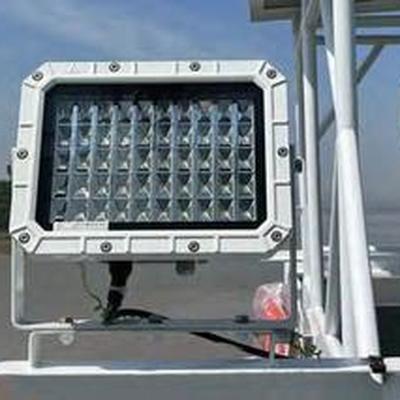Categories
Tags
-
#LED Submarine Navigation Lights
#Stealth Major Light
#LED Marine Cabin Lights
#LED Marine Navigation Signal Lights,Marine Spotlights,Marine Searchlight,
#Explosion-proof fire Emergency Lights
#LED Marine Navigation Signal Lights
#Explosion-proof Fluorescent Pendant Lights
#Marine Reading Lights
#Marine Navigation Lights
#LED Light
#LED Marine Lights
#Marine LED Lights
#Marine Searchlight Bulb
#Marine Searchlights
#Explosion Proof Lighting
#LED explosion proof lighting
#Marine Waterproof Switch and Sockets
#Boat Cabin Lighting
#Marine Spotlights
#Marine Floodlights
#marine cabin lighting
#LED Soft Light Strips
#Marine Navigational Lights
#f Marine Searchlights
#Morse Code Signal Light
#Ship Stern Lights
#Ship Cabin Lighting Fixtures
#LED Marine searchlights
#Explosion Proof Lights
#marine Explosion Proof Lights
#Explosion-proof lights
#Navigation Lights
#Marine Lighting
#CCS Certification
#LED Explosion Proof Flood Lights
#Installing Marine Searchlights
#Marine Explosion-Proof Light
#marine searchlight
#LED marine searchlight
#High-Power Marine Searchlights
#Yushuo
#Marine Light
Archives
Installing Marine Searchlights on Deck
-
Posted by lighting yushuo - Filed in Technology - #Marine Searchlights #Installing Marine Searchlights - 137 views
The marine searchlight is crucial for cargo ships. It illuminates the surroundings in poor visibility. This ensures safe navigation and aids in search, rescue, and signaling. Proper installation of the searchlight is vital for optimal performance. Below is a detailed guide on the installation process and precautions.
Preparations Before Installation
- Select a Suitable Searchlight: Choose a marine searchlight that meets the ship's size, purpose, and navigation area requirements. It should comply with standards like ISO17884 or GB/T24954 and have a marine product certificate.
- Determine the Installation Position: Typically, the searchlight should be installed on the centerline of the ship's bow and stern. It should be positioned as high as possible. For ships like semi-submersibles and offshore supply vessels, you should install front masthead lights. Rear masthead lights should also be installed at the greatest horizontal distance possible between them.
- Prepare Tools and Materials: Gather necessary tools (wrenches, screwdrivers, electric drills, spirit levels, etc.) and materials (ship-grade wires, sealants, junction boxes, bolts, nuts, washers, etc.).
Installation Steps
- Secure the Base: Firmly fix the searchlight base to the deck. Use bolts, nuts, and washers to attach it securely. Tighten everything with a wrench. This prevents loosening during navigation. Ensure the base is level using a spirit level.
- Install the Searchlight Body: Mount the searchlight body onto the base, usually via bolted connections. Make preliminary adjustments to the direction and angle as needed, with precise adjustments to follow later.
- Wiring: Run wires from the searchlight junction box to the navigation light controller in the bridge along a predetermined route. Conceal and protect wires from damage and interference. Use ship-grade wires and fix them with cable clips or ties. Ensure reliable wire connections using crimping, welding, or insulation tape to prevent short circuits.
- Wire Connection: Connect wires to the navigation light controller and searchlight terminals. Ensure correct and secure connections. Use flexible cables between junction boxes or plugs and the searchlight for reliability.
Debugging and Testing
- Preliminary Debugging: After installation, conduct preliminary tests. Check if the searchlight turns on/off properly, and if its brightness and color meet requirements. Adjust the angle and direction using the searchlight's adjustment screws to meet lighting needs.
- Function Testing: Test the interaction between the searchlight and the navigation light controller. Ensure remote control from the bridge, including on/off and brightness adjustment. Test additional searchlight features like rotation and zoom if applicable.
- Stability Testing: During navigation, assess the searchlight's stability. Monitor for loosening, falling, or flickering under ship movement and vibration. Address any issues with reinforcement and adjustment.
Precautions
- Waterproofing and Corrosion Prevention: Given the deck's exposure to moisture and salt spray, prioritize waterproofing and corrosion prevention. Place a gasket between the searchlight base and deck for watertight sealing. Apply anti-rust or anti-corrosion coatings to the searchlight housing and metal parts.
- Compliance with Regulations: Ensure the installation meets relevant maritime regulations. These include the Domestic Sea-going Vessels Survey and Inspection Technical Rules. Each searchlight must be controllable from the bridge and connected to the navigation light controller.
- No Interference with Other Equipment: Ensure the searchlight does not interfere with other required lights on the ship. Make sure lighting systems also remain non-intrusive. Maintain proper signal system functionality.
